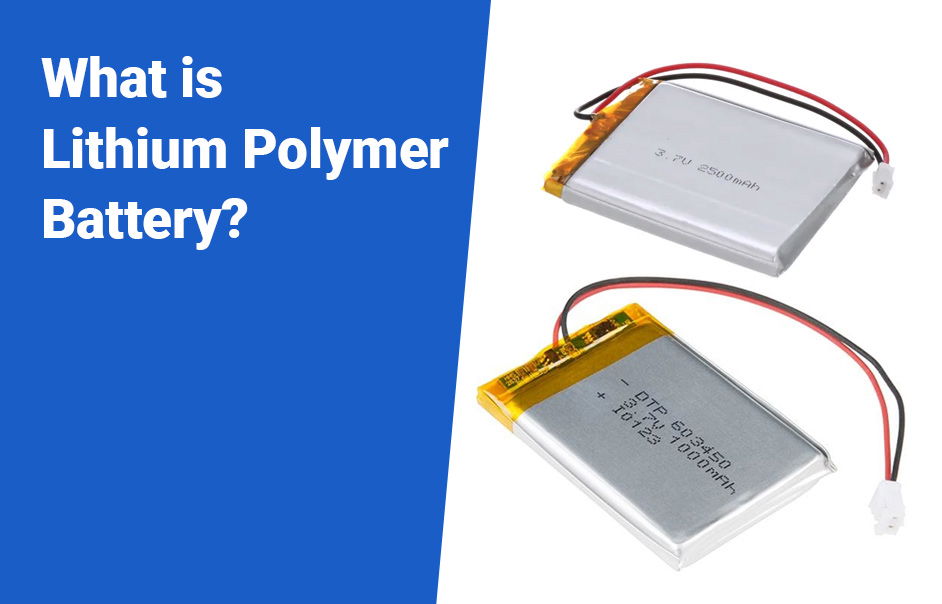Understanding Lithium Polymer Batteries
Lithium Polymer Battery, often referred to as LiPo or Li-Poly, is a rechargeable battery known for its high energy density and lightweight properties. These batteries have gained significant popularity in various industries due to their versatility and performance. Let's delve deeper into what makes lithium polymer batteries unique and why they are widely used across different applications.

Understanding Lithium Polymer Battery Composition
What Is Lithium Polymer Battery? Lithium polymer batteries are composed of several key components that contribute to their functionality. Unlike traditional lithium-ion batteries, LiPo batteries use a solid polymer electrolyte rather than a liquid one. This feature allows for greater flexibility in design and enables manufacturers to create batteries of various shapes and sizes.
Advantages of Lithium Polymer Battery
Lightweight and Flexible
One of the primary advantages of lithium polymer batteries is their lightweight and flexible nature. This characteristic makes them ideal for applications where weight and form factor are crucial, such as in mobile devices and wearables.
Higher Energy Density
Lithium polymer batteries offer higher energy density compared to other types of rechargeable batteries. This means they can store more energy in a smaller and lighter package, making them perfect for portable electronic devices that require long battery life.
Lower Self-Discharge Rate
Another notable advantage of LiPo batteries is their lower self-discharge rate, meaning they retain their charge for longer periods when not in use. This feature makes them suitable for applications where intermittent use is common, such as in remote-controlled toys and backup power supplies.
Applications of Lithium Polymer Battery
Lithium polymer batteries find applications in various industries, including:
- Consumer Electronics: Smartphones, tablets, laptops, and smartwatches.
- Electric Vehicles: Electric cars, bicycles, and scooters.
- Medical Devices: Implantable medical devices, portable medical equipment.
Challenges and Limitations
Despite their many advantages, lithium polymer batteries also face certain challenges and limitations, including:
Safety Concerns
LiPo batteries are prone to overheating and, in some cases, may catch fire or explode if not handled properly. This safety risk has led to concerns, particularly in applications where large battery packs are used, such as in electric vehicles.
Cost Factor
Compared to other types of batteries, lithium polymer batteries tend to be more expensive to manufacture. This higher cost can be a limiting factor, especially for budget-conscious consumers and industries.
Comparing Lithium Polymer Battery with Other Types
Lithium-ion Battery
While lithium polymer batteries share some similarities with lithium-ion batteries, such as high energy density, they also have distinct differences. LiPo batteries offer greater flexibility in design and are generally lighter, but they may have slightly lower energy density and be more prone to swelling.
Nickel Cadmium Battery
Nickel cadmium (NiCd) batteries were once popular but have largely been replaced by lithium-based batteries due to their lower energy density, higher weight, and environmental concerns related to cadmium content.
Future Prospects of Lithium Polymer Battery
Despite the challenges, the future looks promising for lithium polymer batteries. Ongoing research and development efforts aim to improve safety, reduce costs, and enhance performance, making LiPo batteries even more attractive for a wide range of applications.
Conclusion
Lithium polymer batteries have revolutionized the way we power our portable electronic devices, electric vehicles, and medical equipment. With their lightweight design, high energy density, and versatility, LiPo batteries continue to play a significant role in shaping the future of battery technology.
FAQs
- Are lithium polymer batteries safe?
- While lithium polymer batteries can be safe when handled properly, they can pose a risk of overheating and fire if mistreated or damaged.
- While lithium polymer batteries can be safe when handled properly, they can pose a risk of overheating and fire if mistreated or damaged.
- How long do lithium polymer batteries last?
- The lifespan of a lithium polymer battery depends on various factors, including usage patterns, charging habits, and environmental conditions. On average, they can last several hundred charge cycles.
- The lifespan of a lithium polymer battery depends on various factors, including usage patterns, charging habits, and environmental conditions. On average, they can last several hundred charge cycles.
- Can lithium polymer batteries be recycled?
- Yes, lithium polymer batteries can be recycled to recover valuable materials such as lithium, cobalt, and nickel. Recycling helps reduce environmental impact and conserves finite resources.
- Yes, lithium polymer batteries can be recycled to recover valuable materials such as lithium, cobalt, and nickel. Recycling helps reduce environmental impact and conserves finite resources.
- What are the disadvantages of lithium polymer batteries?
- Some disadvantages of lithium polymer batteries include their higher cost compared to other battery types, safety concerns related to overheating, and potential for swelling or expansion.
- Some disadvantages of lithium polymer batteries include their higher cost compared to other battery types, safety concerns related to overheating, and potential for swelling or expansion.
- Can I overcharge a lithium polymer battery?
- Overcharging a lithium polymer battery can lead to overheating, swelling, and, in extreme cases, fire or explosion. It's essential to follow manufacturer guidelines and use a compatible charger to prevent overcharging.
